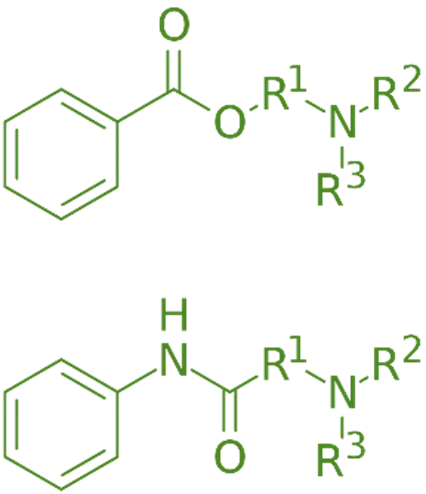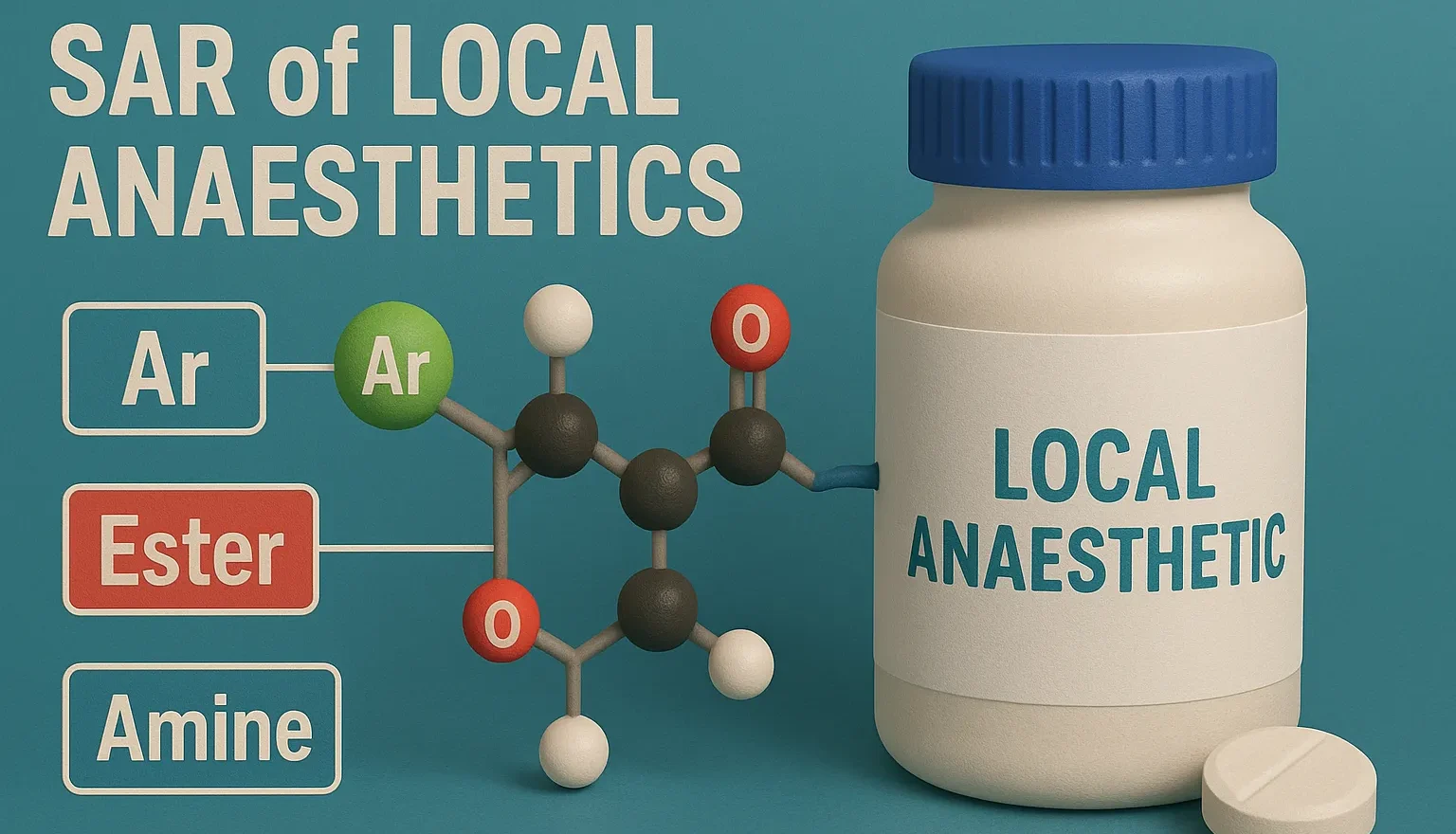SAR of Local anaesthesia
SAR of Local Anaesthesia shows how lipophilic group, intermediate chain, and amine group influence potency, duration, and activity.

-
Aromatic Group (Lipophilic End):
- Typically, a benzene ring, responsible for lipophilicity, enabling penetration of nerve cell membranes.
- Potency is proportional to lipid solubility, influencing membrane penetration.
-
Intermediate Chain (Linker):
- Connects the aromatic group to the ionizable group and determines metabolism and duration of action.
- Ester-linked Anesthetics:
- Metabolized by plasma cholinesterases.
- Higher risk of allergic reactions.
- Amide-linked Anesthetics:
- Metabolized in the liver.
- Lower allergy risk and longer duration of action.
-
Ionizable Group (Hydrophilic End):
- Usually a tertiary amine, contributing to hydrophilicity.
- Degree of ionization affects onset of action:
- Non-ionized form penetrates membranes.
- Ionized form blocks sodium channels inside nerves, causing anesthesia.
Additional SAR Factors:
- Stereochemistry: Enantiomers may differ in activity and toxicity (e.g., bupivacaine).
- Intermediate Chain Length: Longer chains generally increase duration of action.
- Aromatic Ring Substituents: Lipophilic groups enhance potency, while hydrophilic groups may reduce it.

